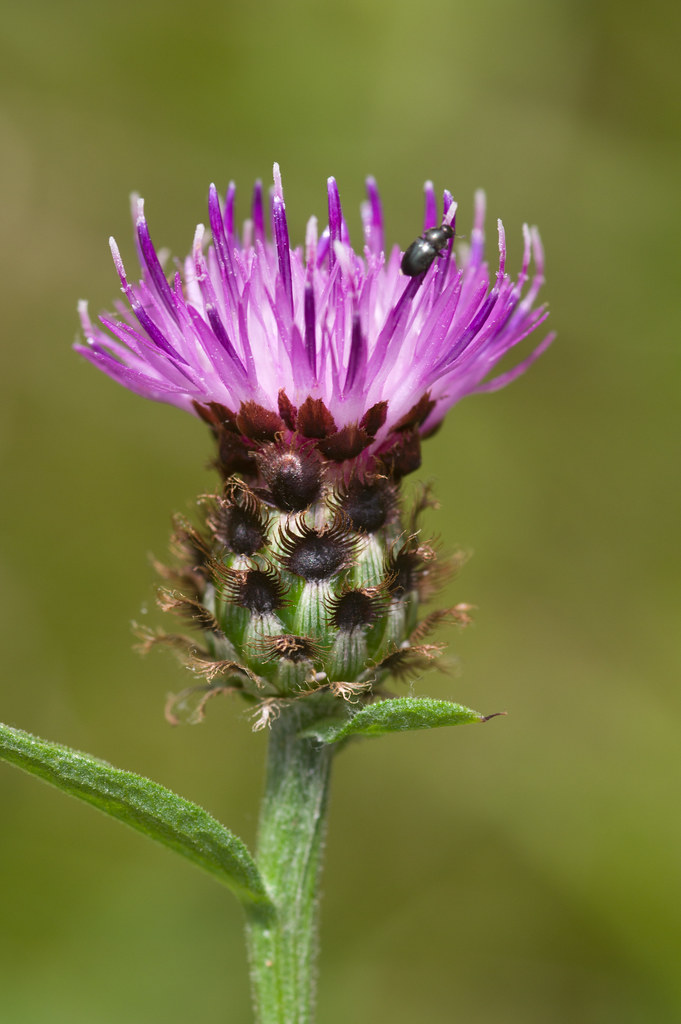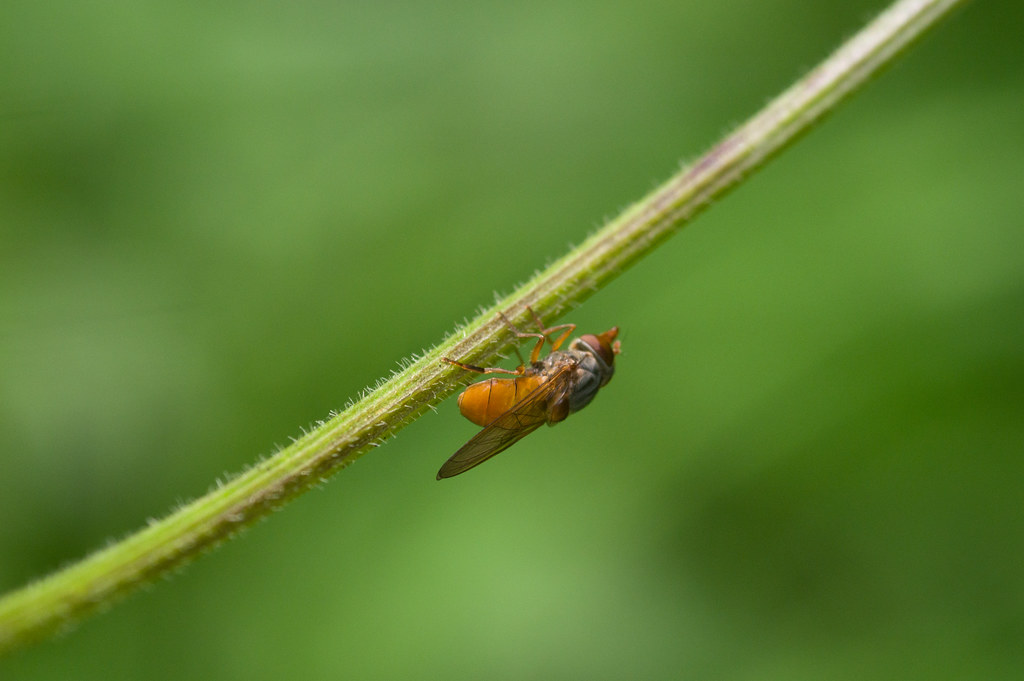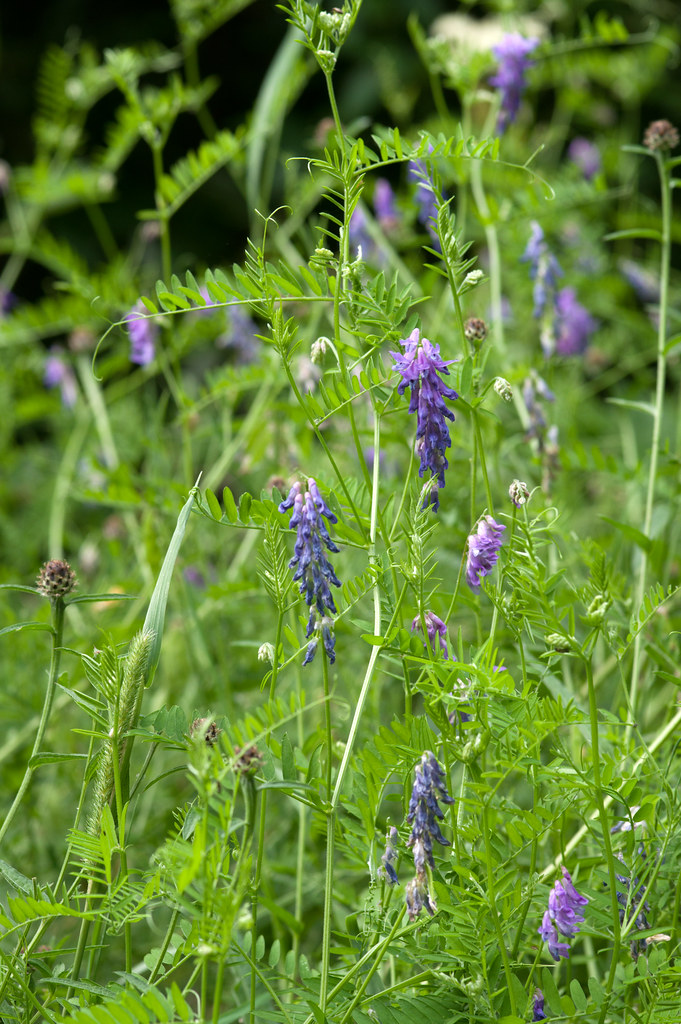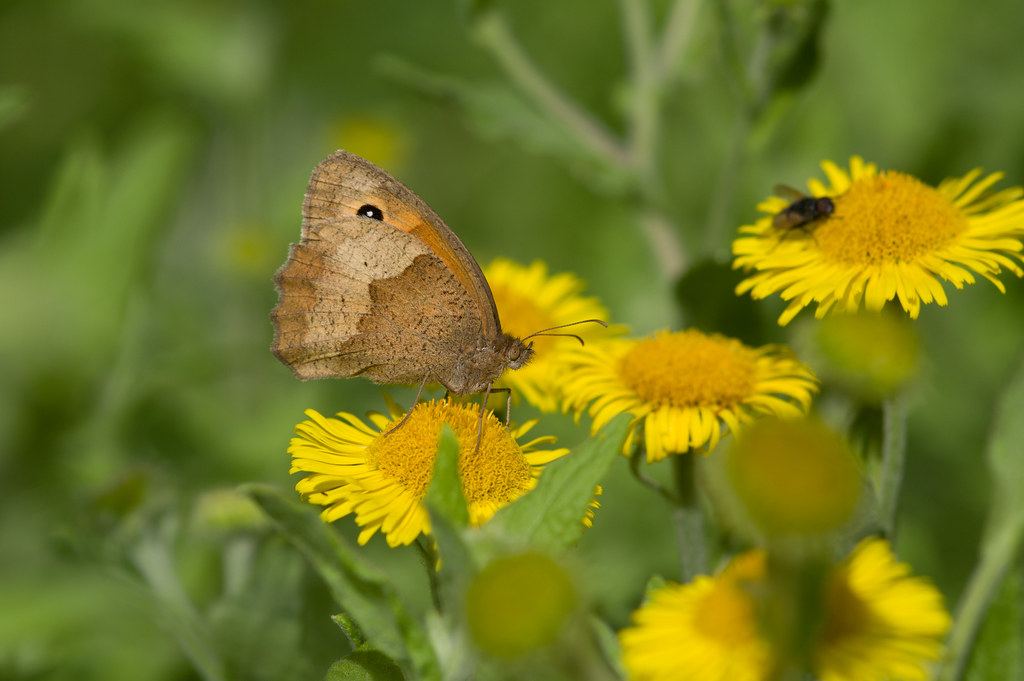Ok, so the initial aim this year of seeing how many species I can photograph within walking distance of my house may have fallen by the wayside, but I'm still doing my best to get out a about and see as much good wildlife as possible. Recently I've signed for for the pan-species listing website http://www.brc.ac.uk/psl/ which has given me fresh impetus to find lots of new species, especially to boost my woeful plant list.
With that in mind I headed up to Potton Wood on Sunday afternoon to see what I could find, and with a vague intention of looking for broad-leaved helleborines for the Bedfordshire orchid survey. Before I'd even got into the woods I'd got my first new species in the form of the extremely common black knapweed, which was growing in abundance along the verges.
 |
| Common or Black Knapweed |
Inside the wood I was mooching around in the undergrowth when I noticed a fly with a bright orange abdomen fly up and land in front of me. Through the camera viewfinder I could see it was one of the distinctive
Rhingia hoverflies, with their bizarre beak like protuberance, but that it looked a bit different from the common species
Rhingia campestris, with no black markings on the abdomen and a generally brighter appearance. I quickly fired off a couple of shots before the fly flew off into the woods, and sure enough they showed enough distinguishing features for me to be happy (with some confirmation from ISpot!) that this was
Rhingia rostrata, the rarer of the two
Rhingia species and a first for me. Historically this was a very rare fly, but recently it appears to have undergone an increase both in range and population, possibly linked to increases in deer numbers as its larvae develop in deer dung.
 |
| Rhingia rostrata |
After this brief diversion I got back into the botanising, and was soon happily ticking off a range of species which I may well have seen before, but have never gone to the trouble of identifying or recording. The main ride into the woods contained Tufted Vetch and Ribbed Melilot scrambling to lift their flowerheads clear of the grass (which I will have to bite the bullet and try to identify at some point) and large patches of the more robust Common Fleabane, whose latin name of
Pulicaria dysenterica refers to its historic use to treat dysentery. Around some of the damper areas were patches of Corn Mint, whilst a large stand of Hemp Agrimony had a delightful bonus in the shape of a couple of Silver-washed Fritillary butterflies nectaring from its flowers. These large and distinctive woodland butterflies were first recorded from the wood last year, and seem to be having another good year, with several of them seen powering down the sides of the ride as well as these more cooperative individuals.
 |
| Tufted Vetch |
 |
| Common Fleabane being photobombed by a meadow brown |
 |
| Silver-washed Fritillary on Hemp-Agrimony |
By the time I left the wood I'd racked up a total of 13 new species, mostly plants, which lifted my life total for the UK up to 1422 species - enough to take me to 44th in the pan species listing - a mere 10421 species behind the current leader!





No comments:
Post a Comment